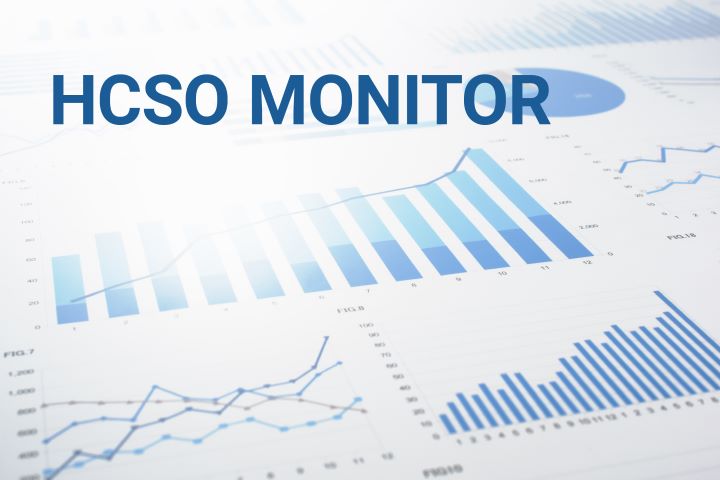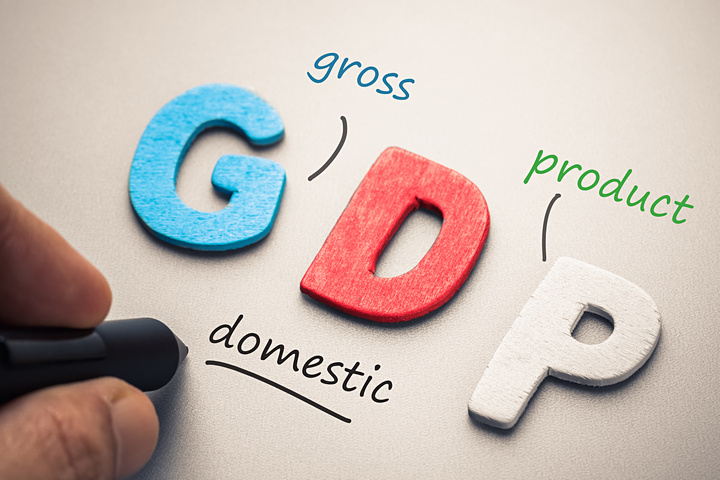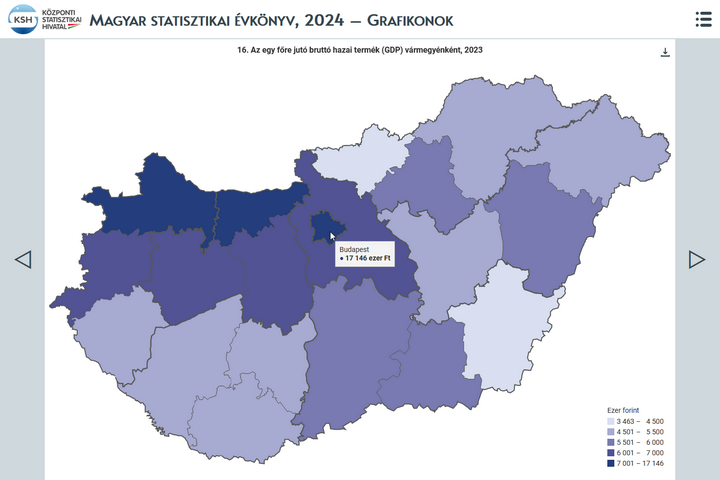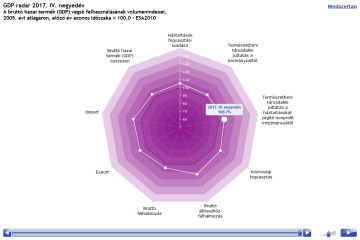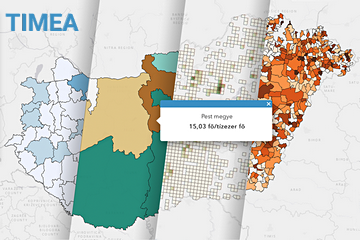National accounts, GDP
National accounts are a system of macro-economic statistical accounts, summarising the economic activities of a particular country, which compares resources with their uses. The data, produced according to the methodology of the European system of national accounts (ESA), are suitable for international comparison, too. The best known and mostly used indicator of the system of accounts is gross domestic product (GDP), the level and volume change of which are key indicators to evaluate the level of development and growth of the economy.
Key figures
GDP volume change
Indicator description
Change in volume of GDP compared to the same period of the previous year. The volume figure published here is unadjusted.
Source of data:
Summary Tables (STADAT)
Last data for period: Q3 2025
Value of GDP per capita, calculated in purchasing power parity
Indicator description
Value of GDP divided by population number, calculated in purchasing power parity. The indicator is suitable for analysing the level of economic development.
Source of data:
Summary Tables (STADAT)
Last data for period: 2024
GNI/GDP ratio
Indicator description
Gross national income (GNI) divided by gross domestic product (GDP). GNI can be derived from GDP. If the value of GNI exceeds that of GDP, then more income flows from abroad to the country than from the country abroad, while in the other way round income outflow occurs.
Source of data:
Summary Tables (STADAT)
Last data for period: 2024
Balance of general government sector as a proportion of GDP
Indicator description
Difference of total revenues and expenditures in proportion of GDP of organisations classified into the general government, in a given quarter.
Source of data:
Summary Tables (STADAT)
Last data for period: Q2 2025
Featured
HCSO Monitor
The collection of interactive figures provides up-to-date information on the latest domestic and international socio-economic trends. The decisive part of the figures included in HCSO Monitor are downloadable in both image and data formats (PNG, SVG and CSV). Feel free to browse the data in HCSO Monitor, updated many times a week!
Economic performance 0.6% higher in 3rd quarter 2025 than in 3rd quarter 2024; Gross domestic product (GDP), 3rd quarter 2025 (second estimate)
The volume of Hungary’s gross domestic product was 0.6% higher according to both raw data and seasonally and calendar adjusted and reconciled data in the 3rd quarter of 2025 than in the corresponding period of the previous year. Compared to the previous quarter, the economic performance stagnated according to seasonally and calendar adjusted and reconciled data. In quarters 1–3 of 2025, GDP was 0.3% higher according to raw data and 0.2% higher according to seasonally and calendar adjusted and reconciled data than in the same period of 2024.
Hungary 1st semester of 2025 – Diverging economic impacts
The performance of Hungary’s economy was identical with the one of the same period of the previous year. The increasing performance of the services sector and consumption growth had a positive impact on GDP. These impacts however have been eliminated by the setback of the industry and agriculture, the continuously subdued investment activity and the deterioration in the balance of the external trade in goods. Retail trade volume continued to rise, tourism nights spent at accommodation establishments also increased in number.
Quarterly non-financial sector accounts, 2nd quarter 2025
According to seasonally and calendar adjusted data, households and non-profit institutions serving households (NPISHs) were in a net lending, while non-financial corporations, financial corporations and general government in a net borrowing position in the 2nd quarter of 2025. The gross saving rate of households and NPISHs came to 17% and their gross investment rate to 5.1%. The gross profit share of non-financial corporations reached 39% and their gross investment rate 27%.
Hungary’s national accounts, 2024 (second preliminary data)
Hungary’s gross domestic product (GDP) at current prices was HUF 81,447.7 billion in 2024, increasing by 0.6% at constant prices compared to the previous year. The amount of gross domestic product per capita was HUF 8.5 million, or EUR 30,391 in purchasing power standard. The deficit of the general government sector was HUF 4,089.6 billion, or 5.0% of GDP, according to the preliminary data of national accounts.
Statistical Yearbook of Hungary, 2024
The yearbook provides an overview of Hungary's demographic, social and economic trends, environmental characteristics and their changes over time, with the help of tens of thousands of data in some 500 tables, charts and maps. In the chapter devoted to earnings and incomes, it is a novelty compared to previous years that net earnings in which allowances and types of exemptions are accounted for, too, came into focus from 2019. In the number of employees, people working in working time shorter than 60 working hours per month are also taken into account. In addition, the theme of environment is completed with areas declared world heritage sites by UNESCO.
Yearbooks, pocketbooks, data repositories
A new sub-page has been added to the HCSO website, more than 400 yearbooks, pocketbooks and data collections, a total of a hundred thousand pdf format pages close to 150 thousand excel tables and several thousand static and interactive graphs and maps are available for download. The sub-page offers the possibility of filtering these yearbooks, pocketbooks and data collections by reference year, serial name, format (PDF, XLS) and supplements (graphs, maps). Users may compile their own list of publications based on the year- and pocketbooks, data collections, adequate to their interests.
Hungary, 2024
Hungary’s GDP increased by 0.5% amid global challenges in 2024. The performance of goods-producing industries lessened, while that of service-providing ones rose, which shows the duality of economic trends. Household consumption picked up, which was considerably encouraged by the purchasing power of earnings growing again with the inflationary wave calming down. Besides, the data series reveal that the level of employment reached another peak.
Related themes
- Culture, sports
- Education
- External trade and balance of payments
- Government finance
- Investment
- Regional statistics
- Science and technology
Methodological information
First releases |
Latest release | Next release |
|---|---|---|
| Balance of general government sector, 1st half of 2025 and 2nd quarter of 2025 | 01/10/2025 | – |
| Gross domestic product (GDP), 3rd quarter 2025 (flash estimate) | 30/10/2025 | – |
| Gross domestic product (GDP), 3rd quarter 2025 (second estimate) | 02/12/2025 | – |
Release and revision calendarPublication repertory
